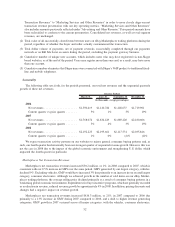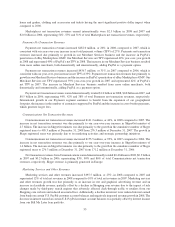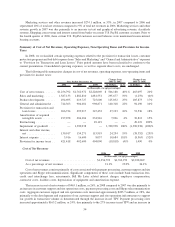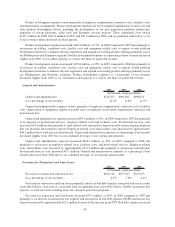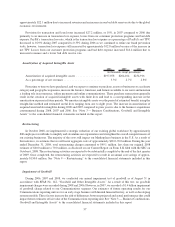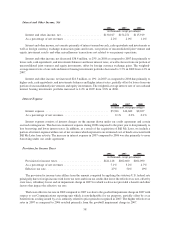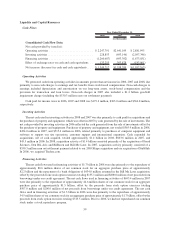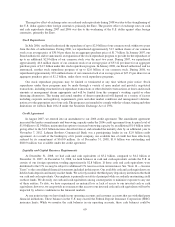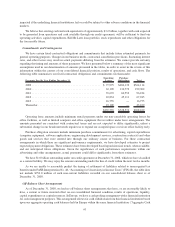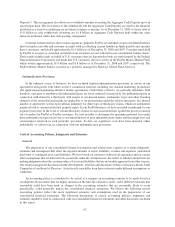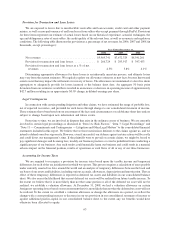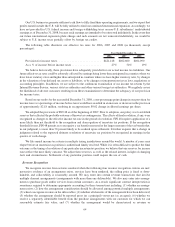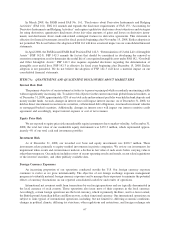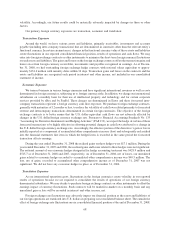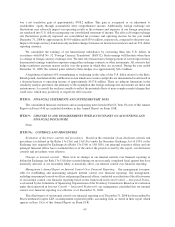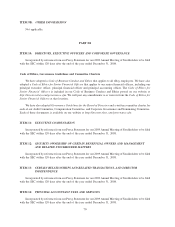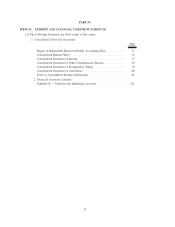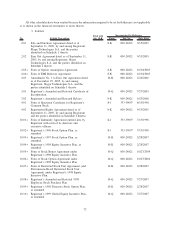eBay 2008 Annual Report Download - page 70
Download and view the complete annual report
Please find page 70 of the 2008 eBay annual report below. You can navigate through the pages in the report by either clicking on the pages listed below, or by using the keyword search tool below to find specific information within the annual report.Deposits”). This arrangement also allows us to withdraw amounts exceeding the Aggregate Cash Deposits up to an
agreed-upon limit. The net balance of the withdrawals and the Aggregate Cash Deposits are used by the financial
institution as a basis for calculating our net interest expense or income. As of December 31, 2008, we had a total of
$1.8 billion in cash withdrawals offsetting our $1.8 billion in Aggregate Cash Deposits held within the same
financial institution under this cash pooling arrangement.
Customer balances held as direct claims against us, primarily PayPal, are included on our consolidated balance
sheet in funds receivable and customer accounts with an offsetting current liability in funds payable and amounts
due to customers, and totaled approximately $1.1 billion as of December 31, 2008 and 2007. Customer funds held
by PayPal as an agent or custodian on behalf of our customers are not reflected in our consolidated balance sheets.
These funds include funds on behalf of U.S. customers that are deposited in bank accounts insured by the Federal
Deposit Insurance Corporation and funds that U.S. customers choose to invest in the PayPal Money Market Fund,
which totaled approximately $1.9 billion and $1.8 billion as of December 31, 2008 and 2007, respectively. The
PayPal Money Market Fund is invested in a portfolio managed by Barclays Global Fund Advisors.
Indemnification Provisions
In the ordinary course of business, we have included limited indemnification provisions in certain of our
agreements with parties with whom we have commercial relations, including our standard marketing, promotions
and application-programming-interface license agreements. Under these contracts, we generally indemnify, hold
harmless, and agree to reimburse the indemnified party for losses suffered or incurred by the indemnified party in
connection with claims by a third party with respect to our domain names, trademarks, logos and other branding
elements to the extent that such marks are applicable to our performance under the subject agreement. In a limited
number of agreements, we have provided an indemnity for other types of third-party claims, which are indemnities
mainly related to various intellectual property rights. In our PayPal business, we have provided an indemnity to our
payment processors in the event of certain third-party claims or card association fines against the processor arising
out of conduct by PayPal or PayPal customers. It is not possible to determine the maximum potential loss under
these indemnification provisions due to our limited history of prior indemnification claims and the unique facts and
circumstances involved in each particular provision. To date, no significant costs have been incurred, either
individually or collectively, in connection with our indemnification provisions.
Critical Accounting Policies, Judgments and Estimates
General
The preparation of our consolidated financial statements and related notes requires us to make judgments,
estimates and assumptions that affect the reported amounts of assets, liabilities, revenue and expenses, and related
disclosure of contingent assets and liabilities. We have based our estimates on historical experience and on various
other assumptions that are believed to be reasonable under the circumstances, the results of which form the basis for
making judgments about the carrying values of assets and liabilities that are not readily apparent from other sources.
Our senior management has discussed the development, selection and disclosure of these estimates with the Audit
Committee of our Board of Directors. Actual results may differ from these estimates under different assumptions or
conditions.
An accounting policy is considered to be critical if it requires an accounting estimate to be made based on
assumptions about matters that are highly uncertain at the time the estimate is made, and if different estimates that
reasonably could have been used, or changes in the accounting estimates that are reasonably likely to occur
periodically, could materially impact the consolidated financial statements. We believe the following critical
accounting policies reflect the more significant estimates and assumptions used in the preparation of our
consolidated financial statements. The following descriptions of critical accounting policies, judgments and
estimates should be read in conjunction with our consolidated financial statements and other disclosures included
in this report.
62


